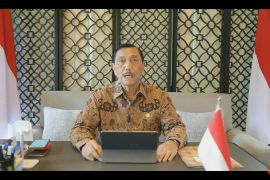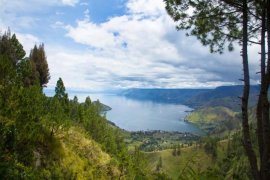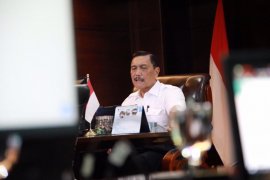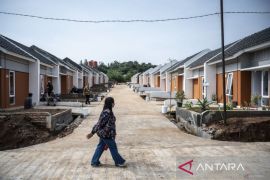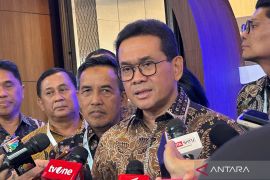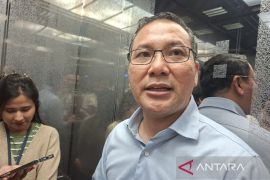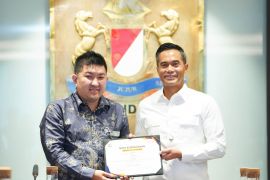No less than 110 Indonesian regions can potentially be developed into geoparks. However, the figure is yet small in comparison with China that has 220 national geoparks, of which 39 have been included on the UGGp List.
However, Indonesia should take pride in the fact that it has become the only country to have issued a presidential regulation on geopark development, notably the Presidential Regulation (Perpres) No. 9 of 2019 on National Geopark management, institution, and budget.
While hosting the Sixth Asia Pacific Geoparks Network (APGN) Symposium in Geopark Rinjani, Lombok, NTB, from Aug 30 to Sept 6, 2019, Indonesia had discussed its proposals on inscription of two more geoparks on the UGGp List.
"We have proposed the names of the two national geoparks of Belitung and Toba to be discussed for inclusion into the UNESCO global geoparks list during the APGN meeting in Lombok," Anton Setyo Nugroho, head of the Maritime Innovation Network Department of the Coordinating Minister for Maritime Affairs Office, concurrently secretary of the Indonesian National Geoparks Committee, stated recently.
The United Nations Educational, Scientific, and Cultural Organization (UNESCO) will reach a decision on whether to accept Indonesia's proposals during the UNESCO Global Geoparks Network (UGGN) meeting to be held in Paris, France, in April 2020.
Over 600 people, including scientists from France, Greece, Japan, Korea, Malaysia, and China, participated in the symposium themed “UNESCO Global Geoparks Toward Sustaining Local Communities and Reducing Geohazard Risk.”
The fourth UNESCO Global Geoparks Council meeting was also organized in parallel with the symposium in Lombok, from Aug 31 to Sept 2, 2019
In the meantime, during the 29th Workshop on Managing Potential Conflict in the South China Sea held in Batam, Riau Islands Province, on Sept 11, 2019, Indonesia's Foreign Affairs Ministry tabled a proposal to establish a geopark network in the South China Sea Rim.
Currently, at least 46 UNESCO Global Geoparks (GG) are there in the South China Sea Rim. The presence of geoparks helps to improve the economy and contribute to the prosperity of the local communities.
Indonesia sees huge potential in developing cooperation among geoparks in the South China Sea Rim in order to support nature and cultural conservations, develop the creative economy, and promote the tourism sector, the ministry's Director of the Centre for Policy Analysis and Development for Multilateral Affairs, Dindin Wahyudin, emphasized.
A regional geopark network can serve as a platform for sharing best practices and for capacity building. The network should promote the role of small and micro businesses in the region and encourage combined tour packages by connecting geoparks in the South China Sea as an integrated regional tourism destination and market.
Dindin cited the Langkawi Geopark in Malaysia as a good example of a geopark managing to bring about significant economic growth, particularly after its inscription into the UGGp List.
Currently, Indonesia is developing several geoparks, including the Natuna Geopark, which is strategically located adjacent to the South China Sea region.
Natuna was officially designated as the National Geopark of Indonesia on November 30, 2018, and Indonesia is currently promoting the Natuna Geopark as one of the UNESCO Global Geoparks.
In addition to positively impacting the local economy by increasing the flow of investments and tourists, the presence of the Geopark in Natuna can aid in environmental preservation while achieving the Sustainable Development Goals.
Furthermore, the Ende district government is upbeat about the Kelimutu National Park and the adjoining area in Kelimutu Sub-district, Flores Island, East Nusa Tenggara Province, being designated a geopark area in 2021.
"Since 2018, we have made preparations for the establishment of a geopark in Kelimutu National Park, and the government's target is to ensure that it materializes in 2021," Hiparkus Hepi, head of the tourism office of Ende District, noted recently.
A working team has been formed to prepare the designation of Kelimutu National Park as a geopark, in cooperation with a team from West Java.
Consultants will conduct field studies on biodiversity, geology, and culture within the national park that is known for its unique three-colored lake.
"From birds, plants, and rocks, to the traditional culture in Kelimutu area will be studied, and the results will be examined by teams from the central government and UNESCO that has the authority to issue a recommendation on whether it is qualified," he stated.
In the meantime, as a follow-up of the Asia Pacific Symposium of Geoparks Network (APGN), a competence test for geopark guides was held in Lombok on September 17-18, 2019.
A total of 78 geopark guides participated in the first-ever competence test encompassing knowledge, skills, and conduct of geopark guides, T. B. Haeru Rahayu, assistant to the coordinating ministry's deputy-in-charge of maritime education and training, stated.
Geopark guides must have a broad understanding of geology and environmental cleanliness as well as be capable of providing public services and vital information to tourists.
"These guides are the envoys of Indonesia or at least envoys of the regions where they work. Tourists, their employers, and also the nation rely on them," he emphasized. Related news: Cooperation among geoparks in South China Sea must be developed
Related news: Natuna has potential to become global geopark: Foreign Affairs Ministry
EDITED BY INE
Editor: Suharto
Copyright © ANTARA 2019


